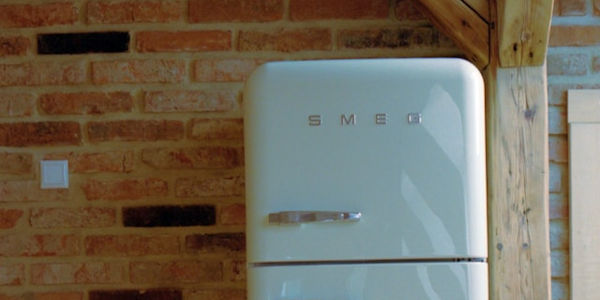- KITCHEN &
LAUNDRY - HOME &
GARDEN - TECHNOLOGY
& GAMING - HEALTH BEAUTY
& FITNESS - OFFICE &
COMPUTERS - KIDS NURSERY
& TOYS - CARS DIY
& OUTDOORS - MENS
CLOTHING - WOMENS
CLOTHING - HOLIDAYS
& TRAVEL - EBAY LOCAL
DEALS
Updated: 14/09/2022 11:49:20
Newer Energy Efficiency Ratings Explained
You may previously be used to your appliances having an A+++ rating, so why are the ratings on new appliances so much lower?

With energy bills on the rise, there are plenty of reasons to trade in your older appliance for a more energy efficient one. There are savings of hundreds of pounds a year to be made just from upgrading some of your large appliances with newer more efficient models. However, if it has been a few years since you've bought yourself a fridge freezer, you might wonder why new models have a B or C rating when the one in your kitchen has an A+ rating.
From March 2021, energy labels for a number of appliance types changed. The previous labelling scheme produced a rating system ranging from A+++ to G, but the new system ranges from A to G.
Why has the rating system changed?
The energy label system has been seen on products for more than 25 years. It was originally introduced to help consumers understand the energy efficiency of the large products they are buying. In general, products have become more efficient as the years have gone by due to increased demand for environmentally friendly products and decreased energy usage. Because the standard had not changed or been updated, most newer products being produced into the 2000's were rated A to A+++. This made it much more difficult to compare the efficiency rating of higher end products.
For example, if all of the refrigerators you are shopping for are rated A+++ it's difficult to decide which is the most energy efficient model without conducting a lot of extra research. Because of this, the requirements for a higher rating have been increased and the labelling range has changed from A to G.
Why are newer products rated so low?
When shopping and comparing now, you'll find that the most efficient products around will be awarded a B or C rating. This is to allow manufacturers to build on their efficiency in the future to work towards that A rating. If the new labelling system awarded A rated products immediately, it would only be a short time before we faced a similar issue with all models holding a high rating making them hard to compare. Products that were previously an A+++ rating are likely to be awarded a C or potentially B rating now.
Which products are affected by the change?
The new energy labels will be found on washing machines, light sources (from October 2021), dishwashers, TVs, monitors, wine coolers and fridges & freezers.
What else has changed on the label?
The new energy labels will include a number of indicators and ratings depending on the product. For example, a washing machine label may include an efficiency rating for spin drying as well as a rating for noise emissions. For televisions this might be a rating for the energy efficiency in HDR mode.The new labels also have a QR-code which will link you to extra information about the product and its ratings. This makes it simple to quickly look up all the product data you need right there in the shop!
On top of energy consumption it is important to take into account how easy products are to repair and recycle. Because of this the new labels are accompanied by the Ecodesign regulation. This helps consumers understand not only the energy consumption of the product they are buying but also the overall environmental impact of their purchases.
In general, appliances are categorised by their size when making energy comparisons. For example, a G rated fridge freezer might cost around £80 a year to run, but a larger model with a better F rating could cost you £90 a year. It's important to remember this when making comparisons, as a better rated large product will still likely cost more to run than a smaller product with a lower rating. Because of this, if you aren't sure which appliances to focus on, we recommend checking the energy efficiency of your largest items, such as your fridge freezer, as this is on 24 hours a day.
For more information on how to make energy savings, you can visit the Simple Energy Advice website.
#advice

Comments
Related products


